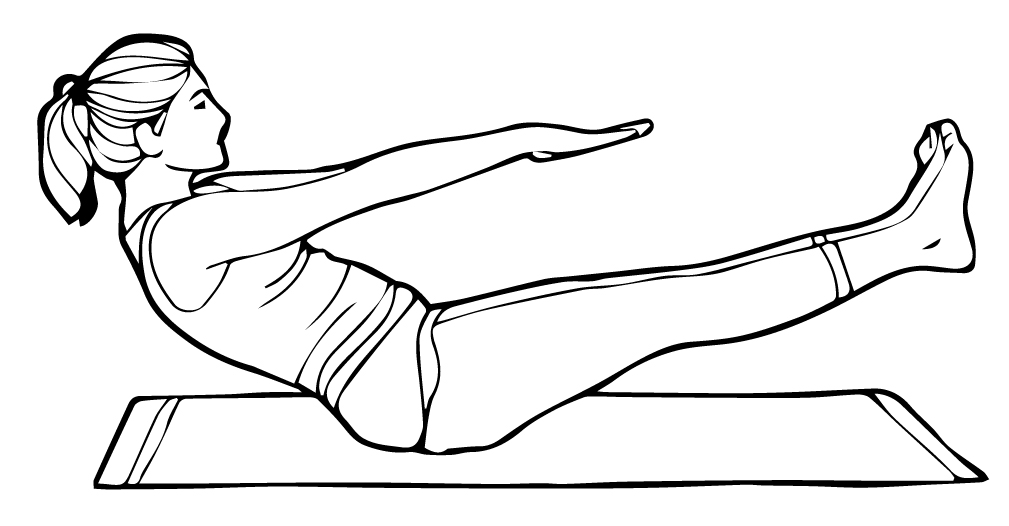5 Effective Yoga Asanas for PCOD

Badhakonasana(Butterfly pose)
This yoga pose stretches the muscles under the thighs intensely, so it should be practiced with care, with the waist and neck remaining erect.
Steps:-
- Sit with your legs straight out in front of you
- Inhale and as you exhale bend the legs at the knees and pull the heels towards your pelvis dropping your knees out to the sides and press the soles of your feet together.
- With your hands grasp the big toe of each foot. Always keep the outer edges of the feet firmly on the floor. Interlocking the fingers of the hands, grip the feet firmly, stretch the spine erect and gaze straight ahead. Hold this pose as long as you can.
- As you exhale take the knees towards the floor bringing the spine up and strong.
- Place the elbows on the thighs and press them down. Exhale, bend forward at the hips and reach for the floor in front of your feet with the face.
- Hold this position from half a minute to a minute with normal breathing. This stretch at the hips and the inner thighs builds flexibility.
- Then inhale, lift your knees away from the floor and extend the legs back to their original position.
Contraindications:-
People suffering from sciatica should not practice Badha Konasana. Also, do not push your knees down with your hands. Just let the stretch happen naturally.

Bhujangasana(Cobra pose)
This asana is considered very powerful, a lot of care should be taken while going into the pose and coming out of the pose. Any jerks of the back while going into the pose can cause discomfort to the back and can also cause injury. While releasing too, the body must drop down slowly and not with a jerk.
Steps:-
- Lie flat on your stomach keeping your legs straight, feet together, heels slightly touching each other and toes pointing.
- Rest the palm of your hands by the side of your chest, your arms must be close to your body with elbows pointing outward.
- Rest your forehead on the floor and relax your body.
- Inhale and raise your forehead, neck and then shoulders. Using your back muscles raise your chest, now use the strength of your arms to raise your trunk. Look upward breathing normally. This is the final position.
- In the final position, your navel should not raise more than 3 cm; with your pubic bones touching the floor. Hold this position for 20-25 seconds.
- To come back to starting position first exhale and then slowly lower your navel, chest, shoulders, neck, and forehead. Relax and take deep breaths.
Contraindications:-
People suffering from sciatica should not practice Badha Konasana. Also, do not push your knees down with your hands. Just let the stretch happen naturally.

Naukasana(Boat pose)
Steps:-
- Lie on your back with your feet together and arms beside your body.
- Take a deep breath in and as you exhale, lift your chest and feet off the ground, stretching your arms towards your feet.
- Your eyes, fingers and toes should be in a line.
- Feel the tension in your navel area as the abdominal muscles contract.
- Keep breathing deeply and easily while maintaining the pose.
- Hold the position for few seconds.
- As you exhale, come back to the ground slowly and relax.
Contraindications:-
- Do not practice this yoga pose if you have low blood pressure, severe headache, migraine, or if you have suffered from some chronic diseases or spinal disorders in the recent past.
- Asthma and heart patients are advised to avoid this pose.
- Women should avoid doing Boat pose (Naukasana) during pregnancy and during the first two days of the menstrual cycle.

Dhanurasana(Bow pose)
Steps:-
- Lie down on your stomach.
- Bend your knees and hold your ankles with your palms.
- Have a strong grip.
- Lift your legs and arms as high as you can.
- Look up and hold the posture for a while.
- Slowly place your shoulders and knees down.
- Unlock your ankles and straighten your legs.
- Turn your head to own side and rest your arms by the side of your body.
- Inhale as you lift your arms and legs up and exhale as you pull your body up. Stay for as long as you can. Exhale as you release from the posture.
Contraindications:-
- High or low blood pressure
- Hernia
- Injury in lower back, neck, shoulders, wrists
- Headache or migraine
- Recent abdominal surgery

Child’s Pose(Balasana)
Steps:-
- First sit straight and comfortably in Vajrasana or table pose with your spine erect.
- Now breathe out gently and try to bend your body in forward direction towards your thighs.
- After that try to touch the floor by your forehead.
- Place your hands by the side of the body. Your hands should be adjacent to your feet and keep your hands to back direction just near to heels with palms facing up.
- As you touch the floor by your forehead, just close your eyes and start counting your breath. Breathe in and breathe out slowly at that moment.
- Try to hold your body in this posture for up to 2 minutes (Day by day increase the time).
- By inhaling release the pose and get back to your initial position or Vajrasana.
- Keeping your eyes closed, relax for some time. You may open your eyes after sometime, whenever you feel complete.

Leave A Comment